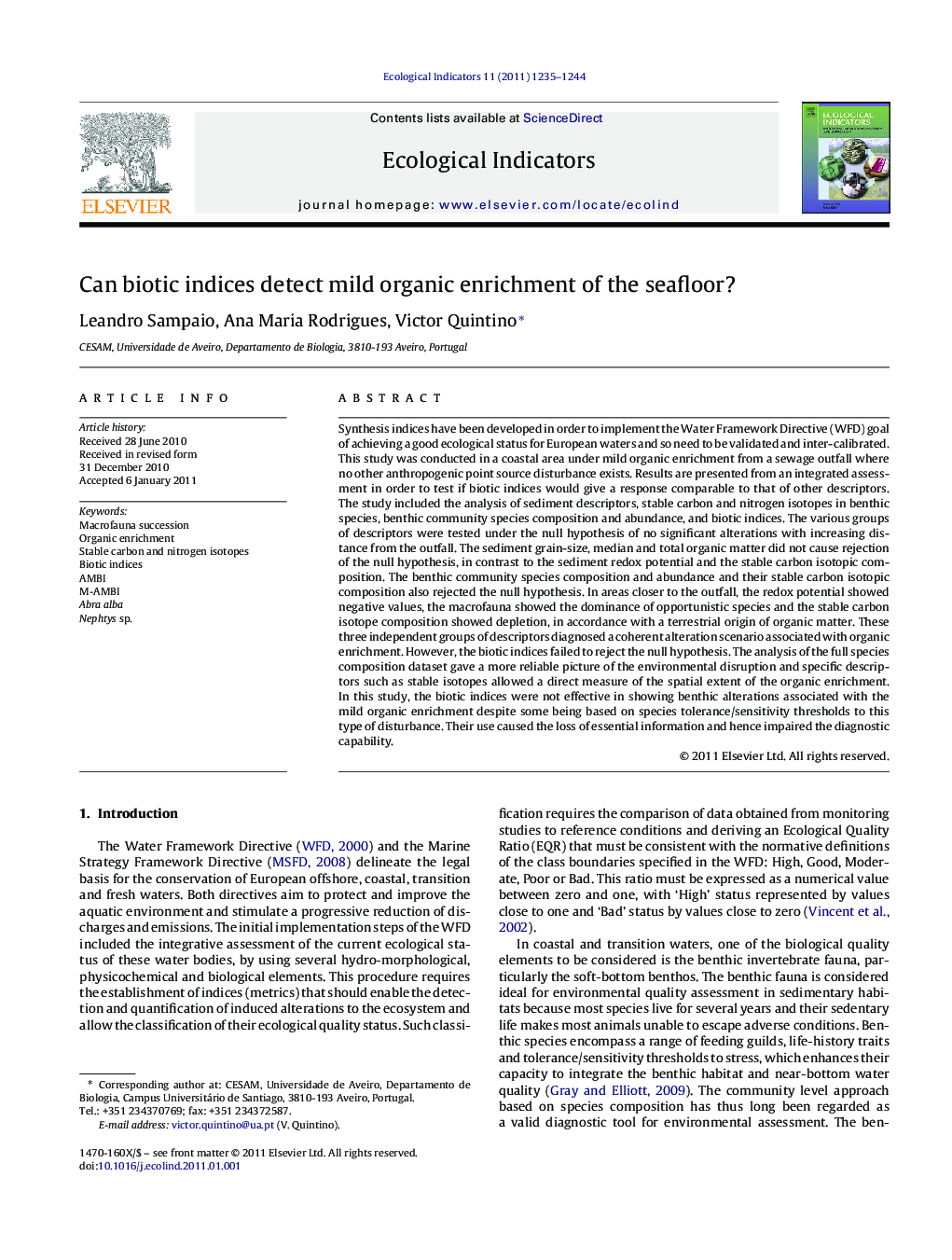| Article ID | Journal | Published Year | Pages | File Type |
|---|---|---|---|---|
| 4374059 | Ecological Indicators | 2011 | 10 Pages |
Synthesis indices have been developed in order to implement the Water Framework Directive (WFD) goal of achieving a good ecological status for European waters and so need to be validated and inter-calibrated. This study was conducted in a coastal area under mild organic enrichment from a sewage outfall where no other anthropogenic point source disturbance exists. Results are presented from an integrated assessment in order to test if biotic indices would give a response comparable to that of other descriptors. The study included the analysis of sediment descriptors, stable carbon and nitrogen isotopes in benthic species, benthic community species composition and abundance, and biotic indices. The various groups of descriptors were tested under the null hypothesis of no significant alterations with increasing distance from the outfall. The sediment grain-size, median and total organic matter did not cause rejection of the null hypothesis, in contrast to the sediment redox potential and the stable carbon isotopic composition. The benthic community species composition and abundance and their stable carbon isotopic composition also rejected the null hypothesis. In areas closer to the outfall, the redox potential showed negative values, the macrofauna showed the dominance of opportunistic species and the stable carbon isotope composition showed depletion, in accordance with a terrestrial origin of organic matter. These three independent groups of descriptors diagnosed a coherent alteration scenario associated with organic enrichment. However, the biotic indices failed to reject the null hypothesis. The analysis of the full species composition dataset gave a more reliable picture of the environmental disruption and specific descriptors such as stable isotopes allowed a direct measure of the spatial extent of the organic enrichment. In this study, the biotic indices were not effective in showing benthic alterations associated with the mild organic enrichment despite some being based on species tolerance/sensitivity thresholds to this type of disturbance. Their use caused the loss of essential information and hence impaired the diagnostic capability.
